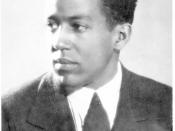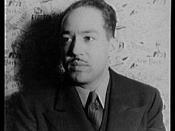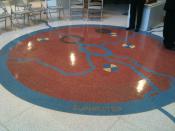In our journey through life, we all have certain expectations of how we would like our lives to be. All of us strive to reach a certain level of self-actualization and acceptance. It could then be said that all of us live a dream. Some of these individual dreams inevitably become the collective dream of many people. In "Harlem (A Dream Deferred)," Langston Hughes makes use of symbolism as well as powerful sensory imagery to show us the emotions that he and his people go through in their quest for freedom and equality. By using questions he builds the poem towards an exciting climax.
Hughes wants to know "What happens to a dream deferred?"(1.1) He asks this question as an introduction for possible reactions of people whose dreams do not materialize. The image he uses in the first question is that of a raisin. He asks the question; "Does it dry up/like a raisin in the sun?"(ll.2-3).
He draws a line between grapes losing it's juices in the sun, to dreams losing some of it's vitality when its realization is deferred for a long time. A closer reading reveals the essential disunity of the poem. It is a ground of unresolved conflict. Various elements of its outer body, its form, contend with each other as well as with various elements of its inner body, its structure: that "sequence of IMAGES and ideas which unite to convey the meaning of the poem" (Thrall 473).
The next symbol he uses is that of a wound that is not healing. "Or fester like a sore-/and then run?"(11.4-5). The image of this symbol is more powerful than the raisin. It gives the reader an example of the resentment that is growing. People are getting more inflamed emotionally, just like the wound gets...


